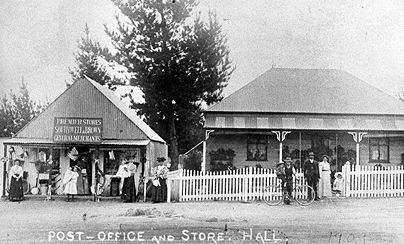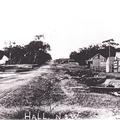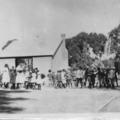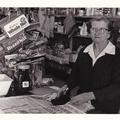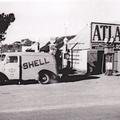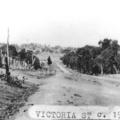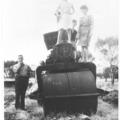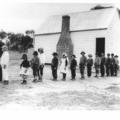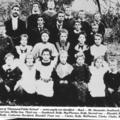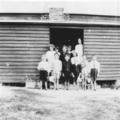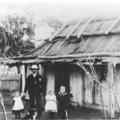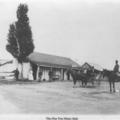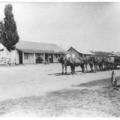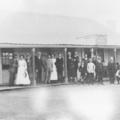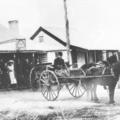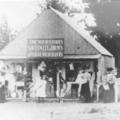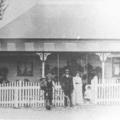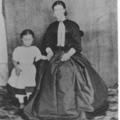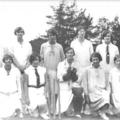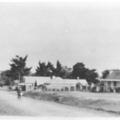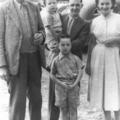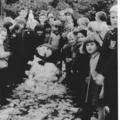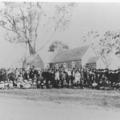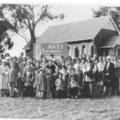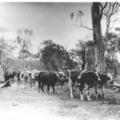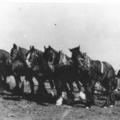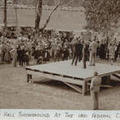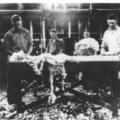History of Hall - a Timeline.
29 May 2010
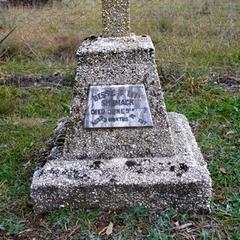
The forthcoming Centenary of Canberra in 2013 is stimulating a good deal of interest in the history of the Territory and the national capital. When the border of the Federal Capital Territory (as it then was) was drawn in a direct line from Mt Coree to One Tree Hill, the small community of Hall fell just inside the new Territory, but some district landowners were left with land on both sides - freehold in NSW, but leasehold in the FCT. A significant number of those whose land was resumed by the Federal government left the district rather than become lease-holders.
As part of an ACT Heritage project the Progress Association is assembling a 'Volunteer Guides Handbook' for those who volunteer to acts as 'guides' at the Hall School Museum. The following Hall timeline is to be included in the Handbook.
Readers are encouraged to send comments, or suggestions for additional dates.
1864: 'One Tree Hill' Hotel opened
1879: Re-named 'Cricketers Arms Hotel' by new licensee Joseph Bolton
1881: Hall village surveyed
1882: Wattle Park Church opened
1882: Ginninderra police station opened
1882: village of Hall proclaimed
1883: Hall Cemetery proclaimed
1886: First Hall land sales
1886: First ploughing match at One Tree Hill ground
1887: Railway line reached Queanbeyan
1888: Post Office opened in Hall
1889: First store opened, run by Eva Southwell
1901: Hall Progress Association formed
1901: Commonwealth of Australia established
1902: Village well dug ('McClung's Well')
1907: George Kinlyside's hall opened
1910: St Fancis Xavier's Catholic Church opened
1910: Ginninderra School closed
1910: Hall's first, manual, telephone exchange (two subscribers)
1911: Hall School opened
1911: Commonwealth of Australia took possession of the Federal Territory
1913: Canberra named as the National Capital
1912: New Premier Store opened
1916: Hall Branch of Red Cross Society formed to support the troops
1918: Cricketers Arms Hotel forced to close by ACT prohibition law
1919: Tennis courts at the Showground built
1927: Inaugural Canberra Show at Hall Showground
1934: Ross Brown took over the Premier Store
1943: Hall Bush Fire Brigade first established
1948: Electricity supply connected
1948: Dedication of St Michael and All Angels Anglican church
1952: New automatic telephone exchange replaces manual exchange
1960: Barton Highway fully sealed
1963: Last Canberra Show to be held at Hall
1967: Water supply connected
1975: 'District of Hall' development proposal for Halls Creek valley (not implemented)
1978: Sewerage reticulation to Hall
1979: Major bush fire through 'Gold Creek' -> Hall Bushfire Brigade re-established
1980: Hall Bypass opened
1981: Village of Hall Policy Plan issued by NCDC
1981: Hall Historical Group established
1982: Hall Premier Store re-built.
1984: Hall Village Brass Band established
1986: Laurie Copping Heritage Centre opened by Governor General
1987: Hall Markets begin
1988: Bicentennial National Trail launched – passing through Hall
1988: Bicentennial celebrations: Governor General Ninian Stephen visits Hall
1992: Hall War Memorial unveiled (Rotary Club of Hall project)
1993: Hall Heritage Art Show
1996: 'Mulangarri Gardens' Aged Persons Units built
1997: World Masters Games Polocrosse competition at Hall
1999: Showground sports fields resurfaced, new parking for Hall Markets
2001: Hall village precinct entered on the Interim Heritage Places Register
2001: Progress Association Centenary celebrations
2002: Village of Hall Master Plan released
2004: Governor General Michael Jeffery dedicates School Museum to Laurie Copping
2006: Hall Primary School closed
Our photo shows the grave of Bessie Shumack, the first person to be buried at Hall cemetery, in 1907.


